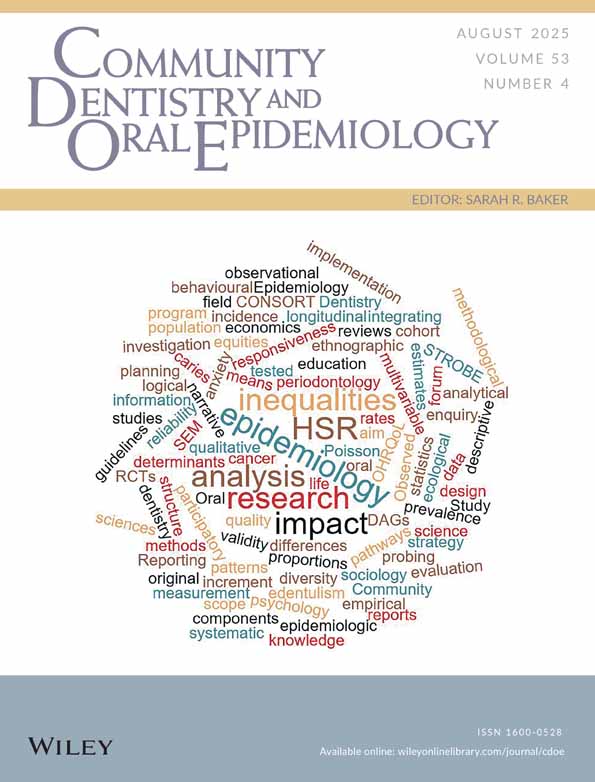Caries experience of some countries and areas expressed by the Significant Caries Index
Abstract
Abstract –
Objectives: To calculate and present the caries prevalence for some countries/states among 12-year-olds, expressed as Significant Caries Index (SiC Index) and to analyse the relationship between the mean DMFT and the SiC Index for these countries. SiC Index is the mean DMFT of the one-third of a population with the highest caries values.
Methods: An Excel® application for calculating SiC was developed (http://www.whocollab.od.mah.se/expl/siccalculation.xls) and indices were calculated from the data collected for 14 countries and one state from the Country/Area Profile Programme (http://www.whocollab.od.mah.se/index.html). To investigate the provinces of a country that had already reached the proposed SiC Index goal of 3 DMFT among the 12-year-olds, data for 17 counties and a city from Sweden were collected and the respective mean DMFT and SiC Indices calculated.
Results: The mean DMFT varied from 1.0 to 8.5 and the SiC Index varied from 2.8 to 13.7 in the national data. Jamaica, Senegal and Sweden were the only three countries that showed SiC Indices that were less than 3 DMFT. The mean DMFT varied from 0.5 to 1.4 and the SiC Index varied from 1.4 to 3.6 in the Swedish county/city data examined. A strong linear relationship between the mean DMFT and the SiC Index was found for the populations presented in this study.
Conclusion: The SiC Index is an indicator that reflects the situation among the most caries-exposed individuals and could be included in future population-based oral health surveys together with the mean DMFT.




